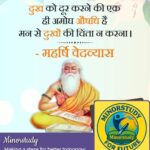🌟 Introduction: Panchatantra – India’s Ancient Wisdom for All Ages
Panchatantra: Once upon a time, long before bedtime stories were a thing, India gave the world a gift of wisdom wrapped in tales — the Panchatantra. It’s more than a children’s storybook. It’s a manual for life, cleverly disguised as fables told by animals.
- 🌟 Introduction: Panchatantra – India’s Ancient Wisdom for All Ages
- 📜 History of Panchatantra
- 📅 Timeline of Panchatantra’s Legacy
- 📚 Structure of Panchatantra
- 📌 10 Fascinating Facts About Panchatantra
- ❓ FAQs About Panchatantra
- 🔍 Significance of Panchatantra
- 🪷 Observance and Cultural Influence
- 🙏 Wishing Inspired by Panchatantra
- 🧘 Importance in Daily Life
- 💎 7 Powerful Life Lessons from Panchatantra
- 🏁 Conclusion: Why Panchatantra Is Still a Guide for Life
The Panchatantra, meaning “Five Treatises”, is a collection of stories with deep moral lessons and timeless strategies — from politics to friendship, ethics to cleverness — teaching how to live wisely.
Let’s explore everything about this ageless treasure.
📜 History of Panchatantra
Author: Traditionally attributed to Vishnu Sharma, a learned Brahmin scholar.
Origin: Believed to be composed in Sanskrit around 200 BCE in ancient India.
Purpose: Created to educate dull-minded royal princes in niti-shastra (wise conduct in life).
Style: It uses animal characters to illustrate human behaviors and ethical dilemmas.
🧠 Real Genius?
Vishnu Sharma knew that people remember stories better than sermons, so he embedded teachings in vivid, entertaining tales. His goal? Not just to teach morality but how to succeed in life with wisdom, wit, and strategy.
📅 Timeline of Panchatantra’s Legacy
| Period | Milestone |
|---|---|
| Around 200 BCE | Original Sanskrit Panchatantra written by Vishnu Sharma |
| 500–800 CE | Translations into Pahlavi (Middle Persian), and later Arabic |
| 750–1000 CE | Arabic version “Kalila wa Dimna” spreads across the Middle East and Europe |
| 1100–1300 CE | Translations in Greek, Hebrew, Latin, and other European languages |
| 1700s–Present | Widely adapted into children’s books, cartoons, textbooks, and moral stories |
📚 Structure of Panchatantra
The Panchatantra is divided into five books, each centered on a theme:
Mitra-bheda (Loss of Friends) – Stories about betrayal and caution in friendship.
Mitra-labha (Gaining Friends) – Value of genuine friendship and alliances.
Kākolūkīyam (War and Peace) – Lessons on politics, conflict, and strategy.
Labdhapraṇāśam (Loss of Gains) – How to avoid losing what you’ve earned.
Aparīkṣitakārakaṃ (Rash Actions) – Warnings against impulsive decisions.
Each section uses interwoven “stories within stories”, making it rich and layered.
📌 10 Fascinating Facts About Panchatantra
🌍 One of the most translated books in the world, second only to the Bible.
🦊 Characters like Jackal, Lion, Crow, Monkey, and Tortoise are symbolic and relatable.
📖 Inspired literary works in Persian (Kalila wa Dimna) and Arabic (Alf Layla wa Layla).
🎓 Used as a tool for education and character-building in ancient India.
🌱 Emphasizes human psychology, wit, diplomacy, and ethics.
📚 Part of school curricula in India for decades — still read today.
🎥 Inspired cartoons, comic books, and children’s animation globally.
🗣️ Promotes multilingual wisdom — translated into 50+ languages.
🕊️ Preaches peace, cooperation, and moral decision-making.
🧠 Early example of applied storytelling in behavioral education.
❓ FAQs About Panchatantra
Q1: Who wrote the Panchatantra?
A: Vishnu Sharma, an Indian scholar, is traditionally credited with its authorship.
Q2: Is it a religious or moral book?
A: It’s not religious but teaches secular moral, ethical, and practical wisdom.
Q3: Are the stories only for children?
A: Not at all! Adults can learn diplomacy, decision-making, and leadership skills from them.
Q4: How many stories are there in total?
A: Over 80 stories, though versions may vary across regions and translations.
Q5: How is it relevant today?
A: Its lessons on friendship, betrayal, strategy, and decision-making are eternally relevant.
🔍 Significance of Panchatantra
The Panchatantra isn’t just a storybook — it’s a mirror of life. Its significance spans across centuries and civilizations.
In Ancient Times:
Trained royal princes in politics and behavior.
Served as educational material for young minds.
In the Middle Ages:
Used in courts and royal households across Asia and Europe.
Influenced diplomatic philosophy.
In Modern Times:
Forms part of school education, parenting guides, and ethical teaching.
Provides moral grounding in a world of rapid digital distractions.
🪷 Observance and Cultural Influence
Though there isn’t a formal festival for Panchatantra, it is:
📖 Celebrated in storytelling festivals, especially in India and South Asia.
🧒 Shared with children during bedtime or in moral education sessions.
🖼️ Featured in Amar Chitra Katha comics, Doordarshan cartoons, and more.
🧠 Integrated into psychology, leadership, and corporate training models.
Its legacy lives in every Indian household where elders say, “Let me tell you a story with a lesson.”
🙏 Wishing Inspired by Panchatantra
Here are some wishes or greetings inspired by Panchatantra’s wisdom:
“May your path be as wise as the crow and as steady as the tortoise.”
“Wishing you the strength to face betrayal like the lion, and still stay noble.”
“May you gain friends who are true, like the characters in Mitra-labha.”
These can be perfect for teachers, students, or anyone on a life journey!
🧘 Importance in Daily Life
Panchatantra’s impact isn’t limited to bookshelves — it lives in our day-to-day decisions.
🎯 Personal Life:
Teaches us to choose friends wisely, avoid hasty actions, and be alert.
Provides moral compass to children in an entertaining way.
🧠 Professional Life:
Offers insights into leadership, communication, and strategic thinking.
Ideal for understanding office politics, group dynamics, and negotiations.
🧡 Emotional Intelligence:
Builds compassion, cleverness, patience, and emotional strength.
Makes us reflect on our behavior and consequences.
💎 7 Powerful Life Lessons from Panchatantra
Think Before You Act – Rash decisions, like in “The Monkey and the Crocodile,” bring ruin.
Choose Your Friends Wisely – Wrong friends can destroy you, as seen in “The Blue Jackal.”
Unity is Strength – “The Dove and the Mouse” shows how teamwork overcomes danger.
Don’t Be Greedy – “The Goose That Laid the Golden Eggs” warns against impatience.
Be Clever, Not Just Strong – Brains often win over brawn, like in “The Hare and the Lion.”
Adapt to Change – “The Four Friends and the Hunter” highlights quick thinking in crises.
Truth Wins Eventually – Lies may seem clever, but truth and kindness win in the long run.
🏁 Conclusion: Why Panchatantra Is Still a Guide for Life
Panchatantra: In a world full of rapid change, fake news, emotional fatigue, and moral confusion, the Panchatantra remains a guiding light. It reminds us:
To think deeply
To live wisely
To act kindly
And above all — to never stop learning from life’s small lessons
Whether you’re 6 or 60, there’s always a Panchatantra story waiting to teach you something profound in a simple way.









I got good info from your blog